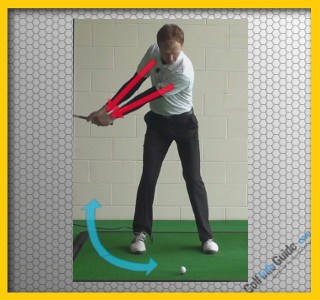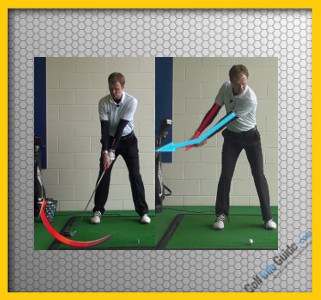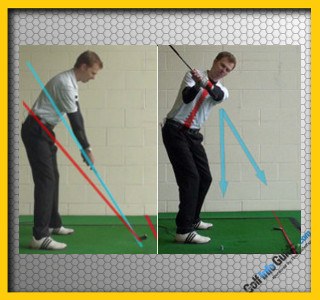For some swinging the golf club on plane is second nature, for others it can be a never ending struggle. Swing plane has created more debate among coaches and advanced players than any other aspect of the golf swing. The most famous visual of swing plane comes from Ben Hogan’s book Five Lessons: The Modern Fundamentals of Golf. When he shows his concept of swing plane he uses a pane of glass that runs from under his chin straight down to the golf ball. The idea was to swing underneath the pane of glass and not break it. Obviously this was an imaginary pane of glass. It also promoted a One Plane Swing which is ideal for consistency and accuracy but not so much for length.
Since our bodies are all different, swing plane can take many different paths. This disguise of body type and swing type from person to person has resulted in a very cloudy concept on proper swing plane over the years.
What is swing plane? It’s the most direct and efficient route from address to impact. It’s very similar to a train and its tracks. When creating a route system for trains, engineers had to find the most efficient path for the train to travel and once this was achieved they laid the tracks. Your target line is the route, the swing plane is the tracks and your club is the train. Depending on a person’s height and weight, their swing plane, will be different from the next person. It’s important to know that your swing will always try to find its ideal plane based on your technique. It’s also crazy to think that the start of perfect swing plane could very well happen in the first 12 inches of the golf swing.
If you currently struggle with swing plane or the overall concept of it, the following tips are sure to give you some valuable insight.
When it comes to swinging on plane in the golf swing, it’s important to know that most golfers who get off plane have it happen in the first 12 inches of the takeaway. In the first 12 inches the golf club should not deviate from the target line. Swing plane gets off to a good start when the hands are quiet and the arms initiate the swing keeping the club very square to the target. When our hands initiate the swing, that’s when the club rolls inside or outside the target line. Golfers that have a very strong grip, have the tendency to initiate the left hand (right hand for left handed golfers) first which shuts the club face down and it moves outside the target line and away from the body. When a player uses a weak grip, the tendency is to have the hands and forearms naturally rotate first which causes an extreme takeaway to the inside. To avoid this, try keeping your hands quiet and initiate your arms first on the takeaway. Have the feeling that your hands are tied or bound together. This will help in keeping them quiet early.

Tip #2 The Butt End Relationship
The butt end of the club can help us immensely when it comes to swinging on plane. From the mid-point of the backswing or hip high, the butt end can tell a tale. If you take a swing and stop your arms at hip high, where’s the butt end of the club pointing? If it’s pointing at the golf ball or target line, you’re on plane. At the top of swing the butt end should still be pointing directly at the target line while the club shaft is parallel to the same target line. On the downswing the butt end will seemingly trace a line straight back down the target line until just before impact where the hands and arms release into the ball. If you can practice these relationships, you will feel the difference between on plane and off plane.
The left elbow (right elbow for left handed golfers) offers another great check point to see if you’re swinging on plane. If we take a swing and stop at hip high, the left elbow should be pointing directly at the golf ball. If this elbow points toward your feet, it means you’re a taking the club outside the line upon takeaway. If the elbow points outwards or upwards it means there’s been a considerable amount of hand initiation early causing the arms to roll open and to the inside. If the left arm is kept in a straight relationship with the elbow pointing at the golf ball or target line, you’ll have a great chance of keeping your swing on plane.








